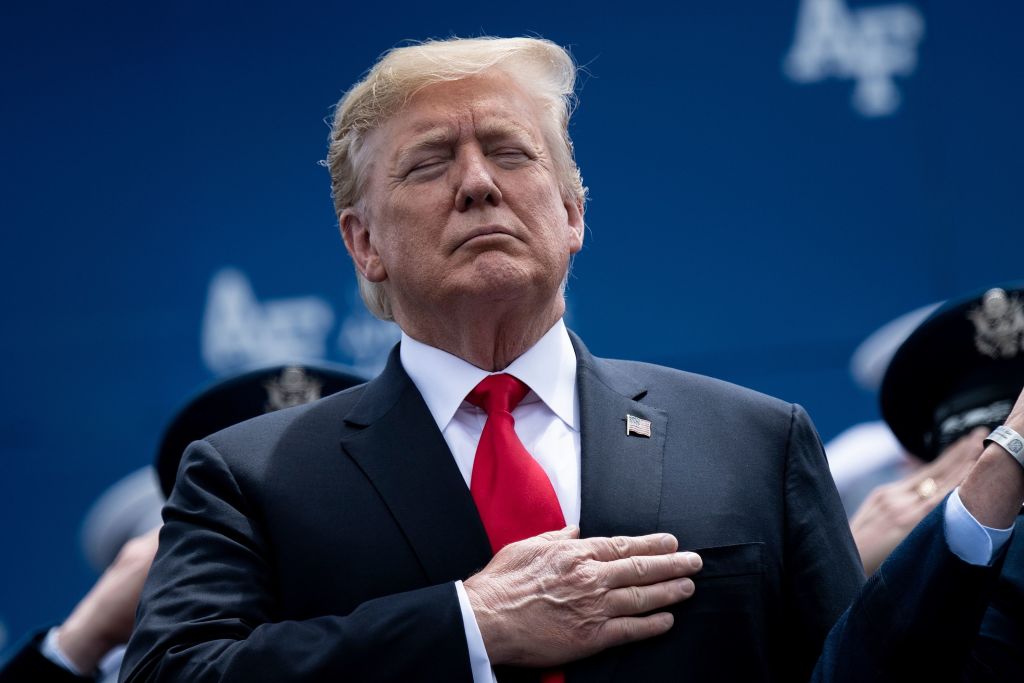
By: LakshmiPS
US President Donald Trump announced punitive trade tariffs on Mexico, hoping to pressure the country to stop the rising flow of migrants from Central America into the United States.
Trump called the problem a “national emergency” and demanded Congress take action to deal with it.
Undocumented migrants are flowing across the US border with Mexico at the highest levels in over a decade. In recent years, most have come from the “Northern Triangle” countries of Central America: Guatemala, Honduras and El Salvador.
And rather than sneaking into the United States, most turn themselves in to US authorities after arriving on US soil, requesting asylum. That makes it impossible for US authorities to summarily deport them.
In the fiscal year that ended September 30, 2017, US Customs and Border Protection apprehended and blocked from entry 415,517 individuals. One year later, the figure was 521,090. That number was already topped in the first seven months of fiscal 2019, with the monthly total in April hitting 109,144. In the area of El Paso, Texas, on Monday alone more than 2,200 migrants were apprehended, according to CBP.
A decade ago, most of the arriving migrants were adults, largely single Mexican men seeking jobs. Today they are predominantly families with children, as well as many unaccompanied children from the Northern Triangle.
The number has overwhelmed the ability of the authorities to temporarily shelter and process them.
The largest numbers are from Mexico, Guatemala, Honduras and El Salvador, with the latter three countries accounting for most of the growth in the past three years. By and large they are refugees from poverty and daily violence in their home countries.
Many in the three countries send their children northward to escape being pulled into criminal gangs prevalent in many communities.
But the migrants also include a sprinkling of people from around the world — more than 1,000 each from Bangladesh, Brazil, India, China, Ecuador and Nicaragua last year, and smaller numbers from dozens of other countries.
Mexican border crossers, if caught, are often sent back. But the United States cannot push migrants from third countries back into Mexico without the Mexican government’s cooperation, which it has not given except in limited cases.
Most of the migrants from the Northern Triangle countries request asylum, knowing that under US and international laws, they cannot be immediately deported.
They undergo initial asylum reviews for “credible” claims that they face persecution in their countries, which most pass. Then they are released to await court hearings on their claims. With a backlog of nearly one million such cases, the wait can easily top one year. Most, according to the government, disappear into the US hinterland and never show up. Fewer than one-fifth are awarded asylum in the hearings.
Trump’s efforts have so far proven unsuccessful in deterring migrants. He has begun building a wall along the border, taking funds from the Pentagon’s budget when Congress would not allocate the billions of dollars Trump wanted for that. The building of the wall will take a long time, and in some ares of the frontier is impractical.
Last year his administration began separating migrant children from their families, a tactic apparently meant to frighten them. But courts ruled that illegal.
The Trump administration also launched a program in which asylum seekers would have to wait in Mexico for their hearings. But Mexico has resisted and many asylum seekers have rejected the program, preferring to stay inside the US.
Trump wants Congress to change laws to make it harder for the migrants to claim asylum. According to news reports, he could soon order that migrants who transit third countries — meaning all those from the Northern Triangle — cannot qualify for asylum. Experts expect that will be challenged in court.
And, in the most drastic action to date, on Thursday he announced he would begin placing tariffs on imports from Mexico to force the Mexican government to stop the northward flow of migrants at its own southern border.
(AFP)
